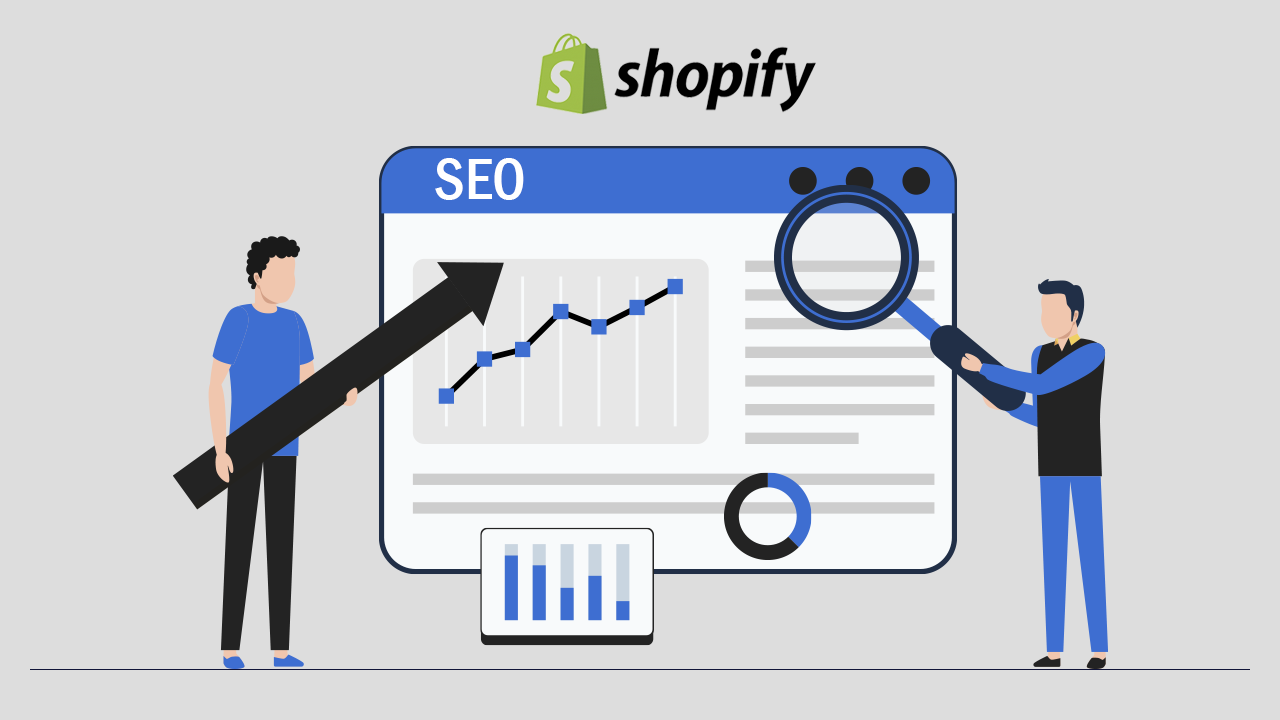Are you running a Shopify store? Then, you would most certainly know that driving traffic is important for getting sales. Paid ads may seem to be great for short-term increase in traffic, but organic traffic is what would be helpful for actual growth in the long run.
In this guide, we’ll break down the basics of Shopify SEO and how you can rank higher on Google.
Why SEO Matters for Shopify Stores?
Shopify makes it easy to set up an online store, but without good SEO practices, your beautiful store might stay invisible to potential customers.
Ranking higher on Google means:
- More free (organic) traffic
- Better brand credibility
- Lower customer acquisition costs
- Long-term growth without relying on ads
Good SEO ensures that when someone searches for a product you sell, your site shows up — not your competitors’.
Key Shopify SEO Strategies You Should Follow
1. Optimize Product Titles and Descriptions
Product pages are the heart of any Shopify store. To optimize them:
- Use relevant keywords naturally in your product titles and descriptions.
- Focus on long-tail keywords (like “organic vegan skincare kit” instead of just “skincare”).
- Write for humans first, but include important search terms.
Example:
Bad Title: Body Lotion
Good Title: Organic Body Lotion for Dry Skin – 100% Natural Ingredients
2. Use Descriptive URLs
Shopify automatically creates URLs based on your product names, but you should still check them.
Keep URLs:
- Short
- Keyword-rich
- Easy to read
Example:
Good: yourstore.com/products/organic-body-lotion
Bad: yourstore.com/products/product-378938xhy3
3. Optimize Your Images
Google can’t “see” images — it reads the alt text you provide.
Best practices:
- Write descriptive alt text for every product image.
- Include relevant keywords if appropriate (without keyword stuffing).
- Compress your images to improve page load speed.
Example Alt Text:
“Organic body lotion in eco-friendly packaging”
4. Create Valuable Blog Content
A Shopify blog isn’t just for updates — it’s an SEO powerhouse.
Why blog?
- Attract visitors searching for information (not just products).
- Build trust and authority in your niche.
- Target more keywords beyond your product pages.
Blog Topic Ideas:
- “10 Benefits of Using Organic Skincare Products”
- “How to Choose the Right Body Lotion for Your Skin Type”
Each blog post is a new opportunity to show up in search results!
5. Improve Your Site Speed
Page speed is a ranking factor for Google and a major factor for user experience.
Slow websites = higher bounce rates and lost sales.
Tips to boost Shopify site speed:
- Compress images (use tools like TinyPNG).
- Use a fast and lightweight Shopify theme.
- Limit third-party apps/scripts.
- Use lazy loading for images.
6. Build Backlinks
Backlinks (when other sites link to yours) tell Google that your store is trustworthy.
How to get backlinks:
- Collaborate with influencers and bloggers in your niche.
- Write guest posts for related websites.
- List your store in niche directories.
Each backlink boosts your SEO authority and helps you climb search rankings.
7. Use Shopify SEO Apps (Wisely)
There are great SEO tools in the Shopify App Store, like:
- Plug In SEO (for SEO health checks)
- SEO Manager (for advanced optimizations)
- TinyIMG SEO Image Optimizer (for speeding up image loading)
However, don’t overload your store with too many apps — choose a few essential ones to avoid slowing down your site.
Common Shopify SEO Mistakes to Avoid
- Duplicate content (same product descriptions as manufacturers)
- Ignoring mobile optimization (more than 70% of users shop on mobile)
- Skipping meta descriptions (they can improve your click-through rate)
- Keyword stuffing (writing unnaturally just to force keywords)
SEO is about balance — always prioritize a good customer experience.
Final Thoughts
SEO may seem complex, but when broken down into steps, it’s very manageable.
If you consistently optimize your Shopify store — from product titles to site speed to content creation — you’ll build a strong foundation for long-term organic traffic and sales.
Start small, stay consistent, and keep improving.
Before you know it, your Shopify store will be climbing up the Google ranks!

